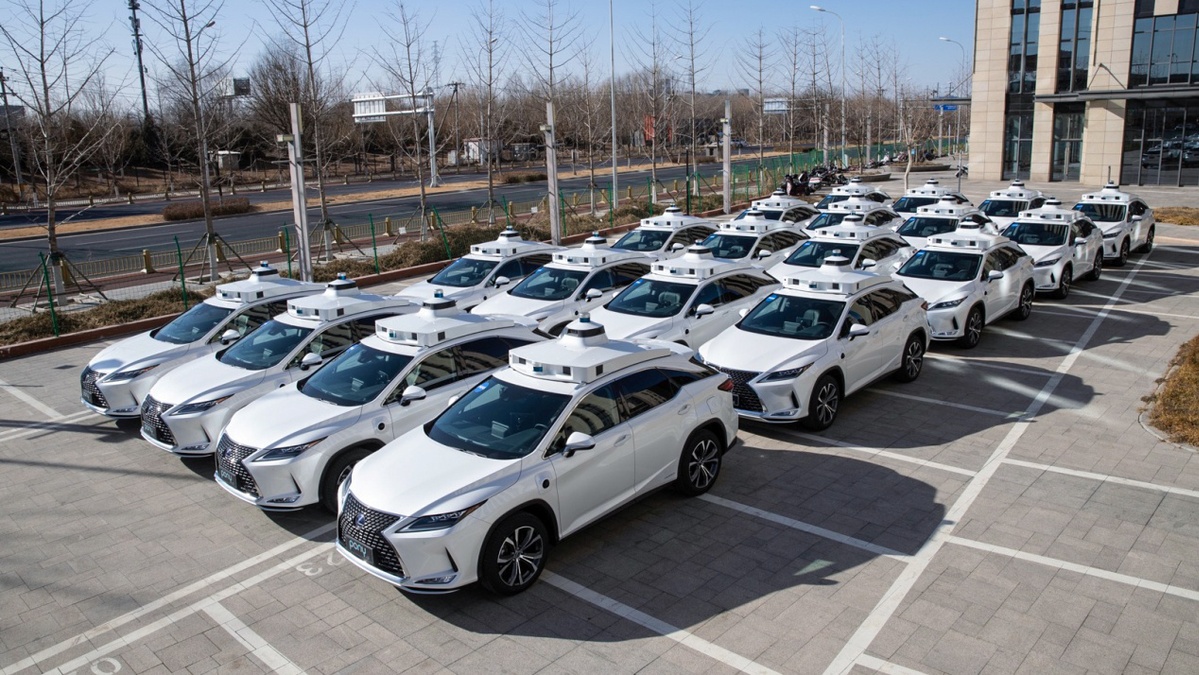
Pony.ai’s fleet of autonomous driving vehicles in Beijing. [Photo provided to chinadaily.com.cn]
Pony.ai is to expand its robotaxi service into more Chinese cities including Beijing, as the autonomous driving startup continues to increase the scope of its operations.
The autonomous driving company now has robotaxi fleets in Guangzhou, Guangdong province, and California in the United States.
“The expansion of our robotaxi service will help us improve our technology and speed up the efforts towards large-scale driverless fleets,” said Vice-President Zhang Ning on Wednesday.
Pony.ai is conducting tests on public roads in five cities in China and the US, with the combined mileage totaling 5 million kilometers.
Besides the passenger vehicle segment, the company has been making forays into the autonomous truck segment since 2018.
Its truck division was established in 2020, and it has obtained the permit to test its autonomous trucks in Guangdong province. Pony.ai unveiled its truck business brand Ponytron on Wednesday.
Statistics show that China’s road freight totaled 33.8 billion metric tons in 2020, and there were over 30 million truck drivers on the roads every day.
Li Hengyu, head of Pony.ai’s truck division, said “We have been exploring how to empower and change the logistics industry with autonomous driving technology.”
Established in 2016, Pony.ai had raised over $1.1 billion by the end of March from investors including Toyota, with its valuation hitting $5.3 billion.
The Chinese government is promoting autonomous driving as well. A blueprint released in 2020 showed that China expects to see 50 percent of domestically built NEVs sold in 2025 to feature Level 2 or Level 3 autonomous functions. The figure will rise to 70 percent by 2030.
Authorities in Shenzhen, Guangdong province, revealed a legal draft earlier this month proposing to permit both conditional and fully autonomous vehicles on its the roads not only for tests but also trial business operations. It is the latest attempt in China to speed up the sector’s commercialization.
